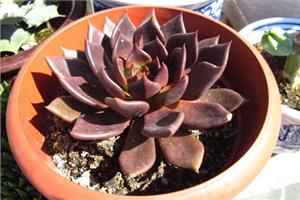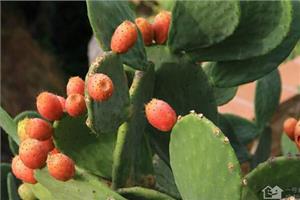Why do asparagus leaves turn yellow? how to protect asparagus with yellowing leaves?
What if the leaves of asparagus turn yellow? There are many reasons for the yellowing of asparagus leaves. If you want to find a solution, what is the root of the problem? The editor has sorted out some solutions, which I hope will be useful to you. Let's take a look at them together.
The reason for the yellowing of asparagus leaves
1. The temperature is too high. Although asparagus likes to be warm, it should not be placed near the fire for a long time, otherwise the leaves of the whole branch will turn yellow and fall off, and the stem will dry up.
2. Direct exposure. Asparagus can not shine directly in the strong sun, which will cause the branches and leaves to be withered and yellow. in addition, when asparagus is exposed to strong light for a long time, the plant is stagnant at first, and then the leaves are yellow.
3. Improper watering. Asparagus likes to be wet, if you ignore watering, or only irrigate the topsoil, the roots do not absorb enough water, and the stems and leaves turn yellow slowly. But also do not accumulate water in the flowerpot, the water is easy to rot roots and leaves withered and yellow.
4. There is not enough light. Asparagus likes warmth and is placed in a shady environment for a long time, and the plant grows weakly and then turns yellow. It is best to put it in a place with plenty of sun in winter, if you put it in a place where there is not enough light, coupled with poor ventilation and cold, it is easy to cause withered and yellow branches and leaves. If such a phenomenon occurs, it is necessary to replace asparagus with new trainers.
5. Improper fertilization. It is necessary to fertilize asparagus regularly so that it has enough nutrients, and the supply of nutrients falls short of demand, and the branches and leaves will turn yellow. Excessive concentration or the application of not yet mature fertilizer is easy to burn seedlings even if dry, long-term not topdressing, will also be fat and yellowing.
In different periods, the conservation focus of asparagus is also different. Asparagus can be fertilized once in late November, moved indoors since December, watered twice a month (soaking basin method), filled with fluorescent lamps on cloudy and rainy days, and sprayed once every two or three days.
Asparagus can be moved out of the room in March next year to fully accept the light, but to avoid direct glare. The moisture of the basin soil can be determined whether it needs watering according to the daily weather conditions and the dry humidity of the basin soil, and there is a spray almost every day in the morning and evening. Fertilize water (urea solution is available) once a week.
From early May to late August, plants need to be indirectly exposed to sunlight or shade, and should not be exposed to sunlight. Water once every 2-3 days, sprinkle more water around the environment and improve air humidity. In this way, asparagus can maintain its exuberant growth momentum.
Note that when the summer temperature is too high, you can put the plant in the shade, but can not put the plant in the air conditioner, it is easy to cause the phenomenon of yellow leaves.
From September to November, the plant is removed from under the tree and placed directly on the platform. The pot is transferred once a week, and the management of fertilizer and water is the same as that of spring conservation.
Causes and maintenance of yellowing leaves of asparagus
1. Strong light exposure. Asparagus culture like semi-shade, summer should not have a strong column of direct sunlight, otherwise it will cause branches and leaves withered and yellow. The solution is to move the flowerpot to a cool place and spray more water on the branches and leaves to increase humidity.
2. Watering is wrong. Asparagus likes to be wet, but it is also too wet and waterlogged, so it is best to keep the basin soil dry and wet, generally not dry and watered thoroughly, but do not let the basin surface be watered too much when watering. If there is too much watering, you can not water temporarily, but only spray water to the leaves to moisturize asparagus.
3. Improper fertilization. Excessive fertilization or application of immature fertilizer will cause asparagus leaves to yellowing and shedding. On the other hand, the nutrient of the planted pot soil is too poor, which will also lead to the yellowing of asparagus leaves. Therefore, when applying fertilizer, we should pay attention to Pushi, but the number of times is more but less, and we should use rotten fertilizer, and for the situation that has occurred, we can take to change the basin soil to solve. It is worth noting that it is not suitable to apply fertilizer in winter low temperature period and summer high temperature period.
4. Gas poisoning. Asparagus is very afraid of smoke and dust. if it is often attacked by harmful gases such as smoke and dust, asparagus will be poisoned with yellow branches and leaves. If this happens, the flowerpot should be moved away from the original position in time, and the work of foliar sprinkler and dust removal should be increased.

Understanding their living habits is the key. Asparagus is a shade-loving plant, likes a warm and humid climate, can not bear cold, but also afraid of summer heat. The temperature in winter should not be lower than 10 ℃. If it falls below 5 ℃, it will be damaged by beads. If the summer temperature exceeds 5 ℃, the growth will stop yellowing. The requirements of light conditions are relatively strict, neither year-round shade, but also can not withstand the sun exposure, exposure in the hot sun for half a day will be withered and yellow. Therefore, it is appropriate to migrate asparagus to indoor culture and grow under scattered light to avoid direct sunlight. Keep the soil fertile, draining and breathable, and keep the indoor temperature above 5 ℃ in winter in order to make it safe through the winter.
- Prev

Cultivation techniques of the Black Prince the mode of reproduction of the Black Prince
Cultivation techniques of the Black Prince the mode of reproduction of the Black Prince
- Next

The growth habit of cactus fruit what is the pot culture of cactus fruit
The growth habit of cactus fruit what is the pot culture of cactus fruit
Related
- Wuhan Hospital Iron Tree Blooming Result Was Instantly Frightened by the Gardener Master
- Which variety of camellia is the most fragrant and best? Which one do you like best?
- What is the small blue coat, the breeding methods and matters needing attention of the succulent plant
- Dormancy time and maintenance management of succulent plants during dormancy
- Minas succulent how to raise, Minas succulent plant pictures
- What are the varieties of winter succulent plants
- How to raise succulent plants in twelve rolls? let's take a look at some experience of breeding twelve rolls.
- Attention should be paid to water control for succulent plants during dormant period (winter and summer)
- Watering experience of twelve rolls of succulent plants
- Techniques for fertilizing succulent plants. An article will let you know how to fertilize succulent plants.

